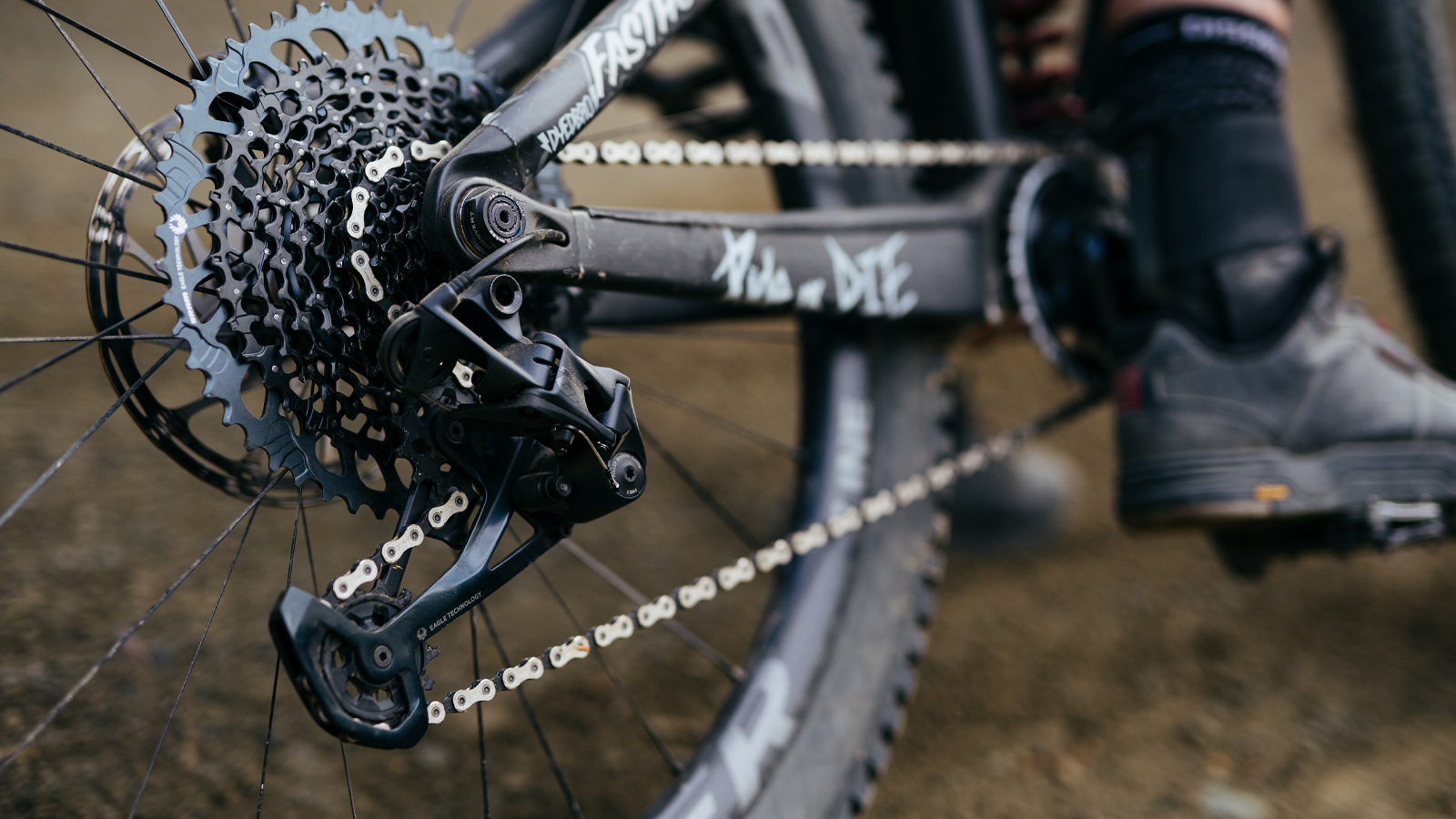
SRAM is a very popular component choice when it comes to choosing the best MTB groupsets and has been for a long time. Back in 2016, it became even more of a fixture when the Eagle drivetrain and its 12-speed cassette hit the market.
At the time, moving to 12-speed meant a sizable investment in the XX1 groupset. Seven years later and that same technology has both improved and trickled down the line-up which is now topped by Eagle Transmission drivetrains.
Lower down the scale, things are a lot more affordable in the SRAM GX and NX groupsets but which one is right for you? Keep reading to see what's different between them and what might work best for you.
Once you've finished this article, you may well be interested in SRAM NX vs SX.
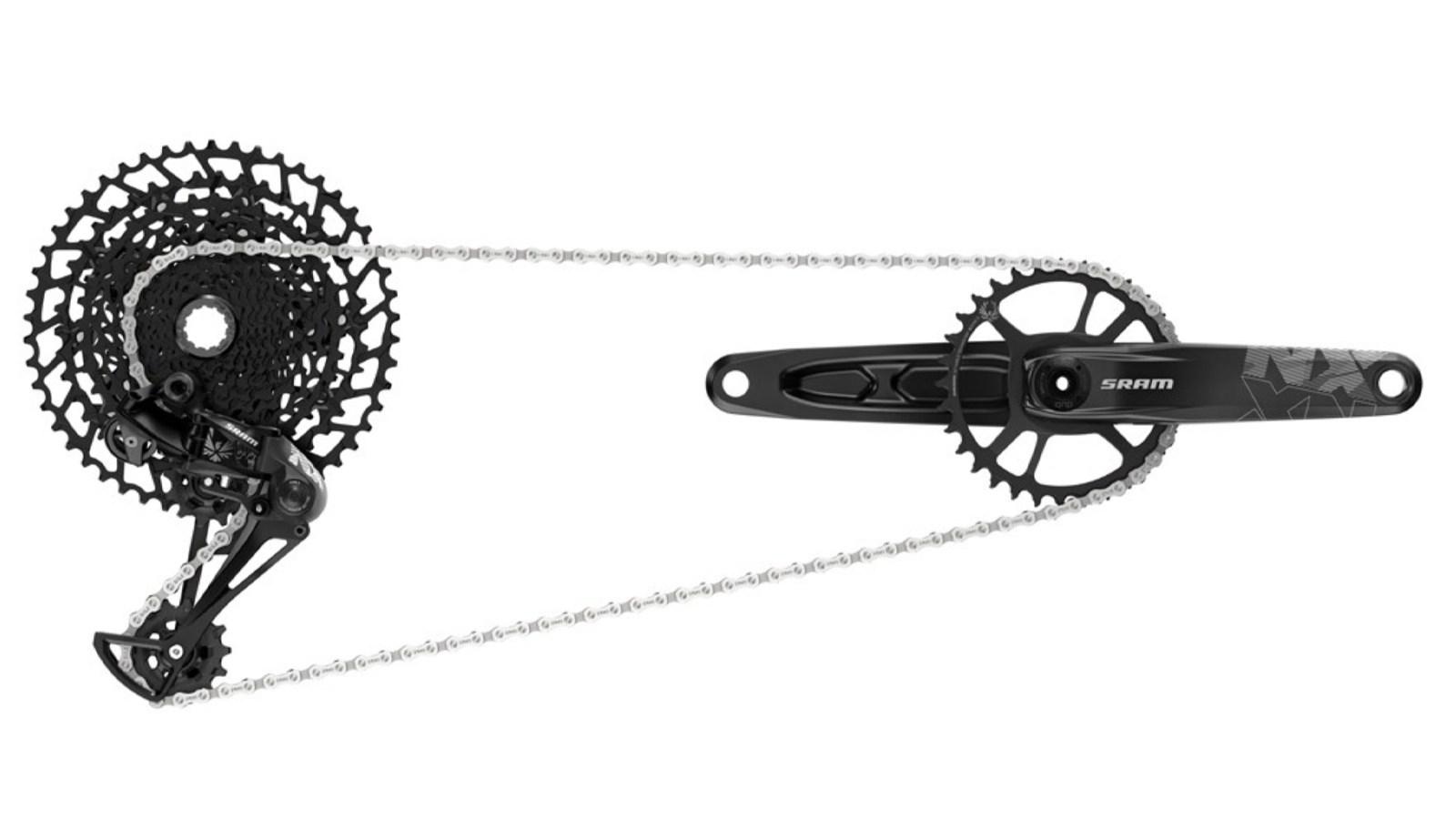
SRAM NX
Why trust BikePerfect
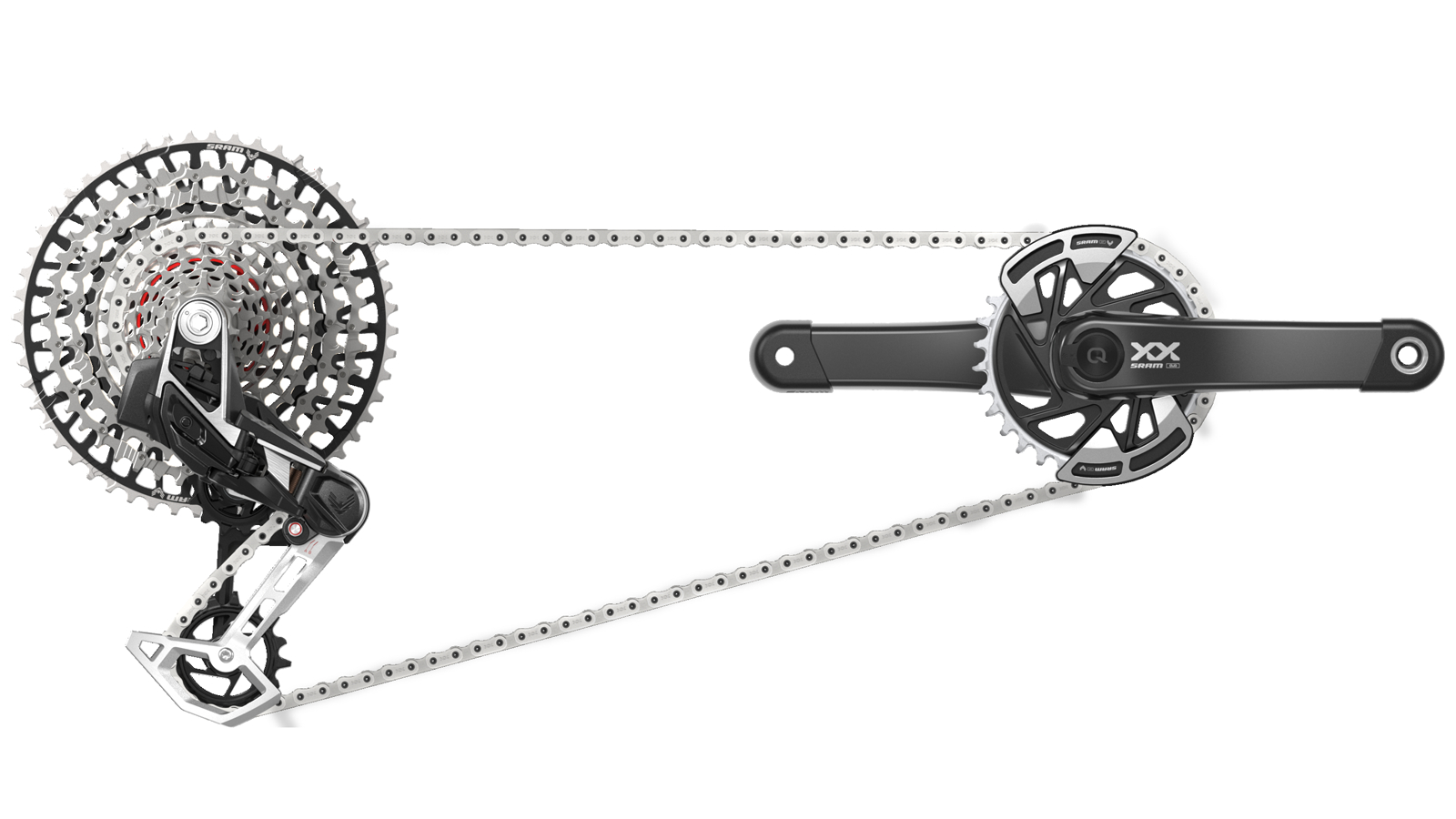
XX SL Eagle Transmission
XX/XO Eagle Transmission
GX Eagle Transmission
XX1 Eagle AXS
XO1 Eagle AXS
GX Eagle AXS
XX1 Eagle
XO1 Eagle
GX Eagle
NX Eagle
SX Eagle
The SRAM NX groupset sits one place above the SX Eagle entry point to the 1x12 drivetrain concept. If you aren't familiar with the terminology that means you get a single chainring in the front paired with twelve gears in the rear.
The magic of it is a rear cassette with a roughly 450 percent range. Not quite as much as a 2x11 mountain bike drivetrain but it's a lot lighter in weight with less complexity. Running a single ring at the front also allows a narrow-wide style chainring to be used, by using alternating sized teeth the narrow-wide style ring helps hold the chain in place without the need of a chain guide.
At the NX level that cassette uses a HG-type freehub. That's a Shimano standard brought over from older drivetrains. If you are upgrading from 11-speed, you don't need new wheels – everything will fit and you can move from 11- to 12-speed.
If you just need parts, instead of a whole drivetrain, there are also NX-level 11-speed components available. SRAM offers pieces to keep an older system moving without a complete overhaul. Pick up a replacement 1x trigger shifter or Grip Shift, crankset, rear derailleur, cassette, or chain. If you want to stick to 12-speed and need parts, the options include trigger shifter, single click trigger shifter aimed at electric bikes, Grip Shift, cassette, chain, and two cranksets for different bottom bracket standards.
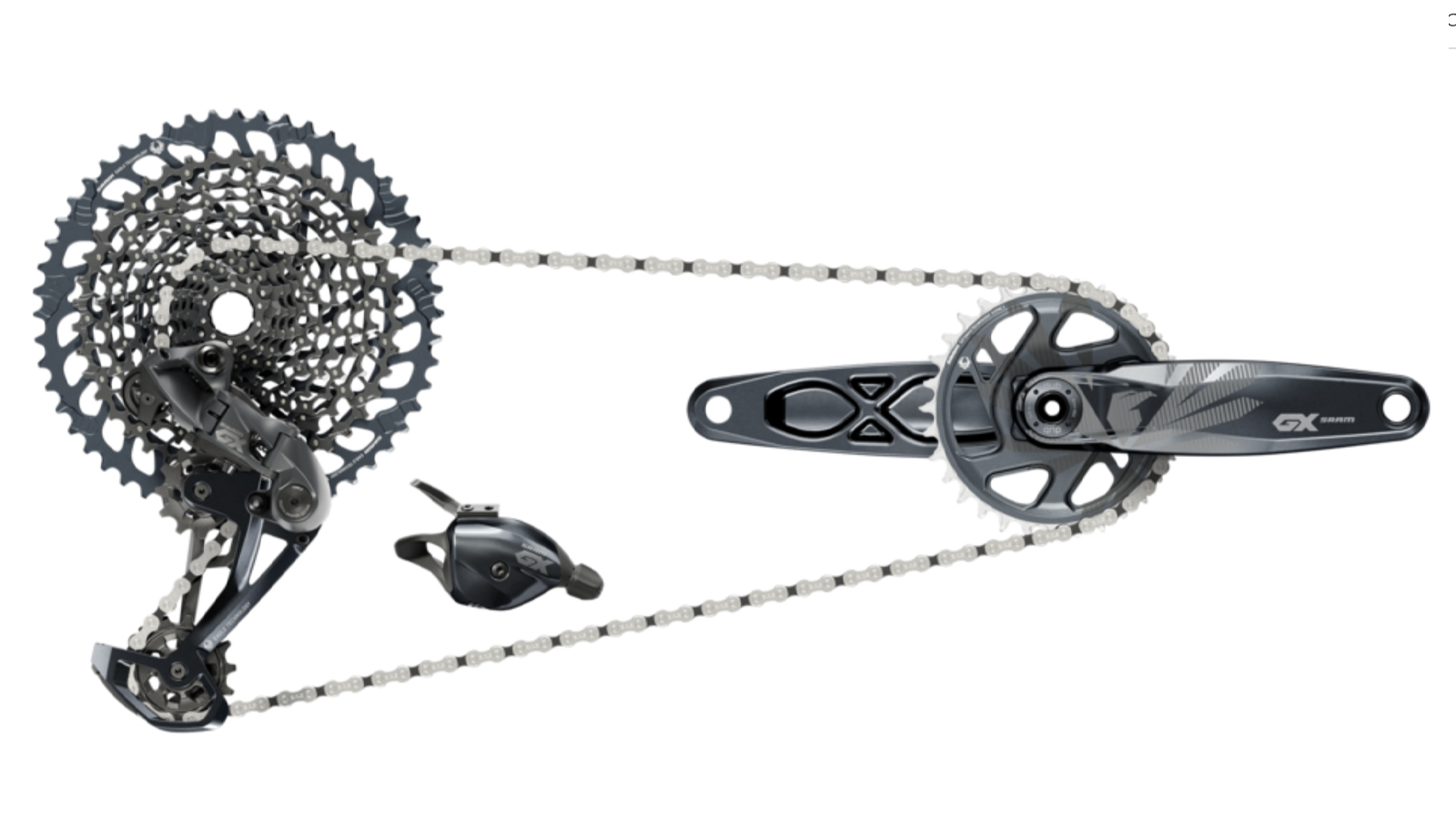
SRAM GX
Moving up one groupset to GX is going to mean, for most people, more cassette range. To make that work you may have to change the freehub on your wheels. Gone are the days of the older HG-style interface, for GX you will need the SRAM-specific XD style driver body. If you have an HG freehub, before shelling out for GX, check that you can get an XD freehub for your existing wheels. Once you've made the switch, the door is open to a 10-52T cassette, a 520 percent range and lots of lighter cassette options.
Make the change to the GX cassette, with its extra range, and you've actually gone beyond the range of a typical system with two front chainrings. Not only do you get a huge range, you still get that simplicity and security of a single ring setup and lower weight – its a win win.
Just like with NX, you've got options besides the mechanical GX Eagle at the same level of componentry. What's different is that now there are quite a few more options. Instead of either Eagle or not, meaning 1x11 or 1x12, you get options for GX Eagle, GX, GX DH and GX AXS. The latest GX incarnation, Eagle Transmission, is not compatible with the older GX systems though.
Sticking to GX Eagle (aside from Transmission) means the available options are trigger shifter, single click trigger shifter aimed at electric bikes, Grip Shift, cassette, chain, and two cranksets for different bottom bracket standards. If you need parts for an older system then GX (non-Eagle) has options for 1x10/1x11, and 2x10/2x11 parts available. If downhill riding is your thing and you don't need the gears to go up a hill, look to the GX DH system for 1x7 parts.
In addition to all the mechanical options at the GX level, this is the first time you have options for electronic shifting with the SRAM GX AXS system. AXS means a fully wireless version of the GX drivetrain with all the same features otherwise. The battery attaches to the rear derailleur and charging means just popping it off and into the charger. The batteries will last for months, but if you plan to head out on an epic journey then as the batteries are small, it's easy to carry extras.
Along with all the obvious benefits of the actual hardware, the AXS app brings even more customization. You can analyze shifting and gear use and personalize the way your controls work. You can go as deep into the configurations as you want or never install it. The app isn't required to use AXS.
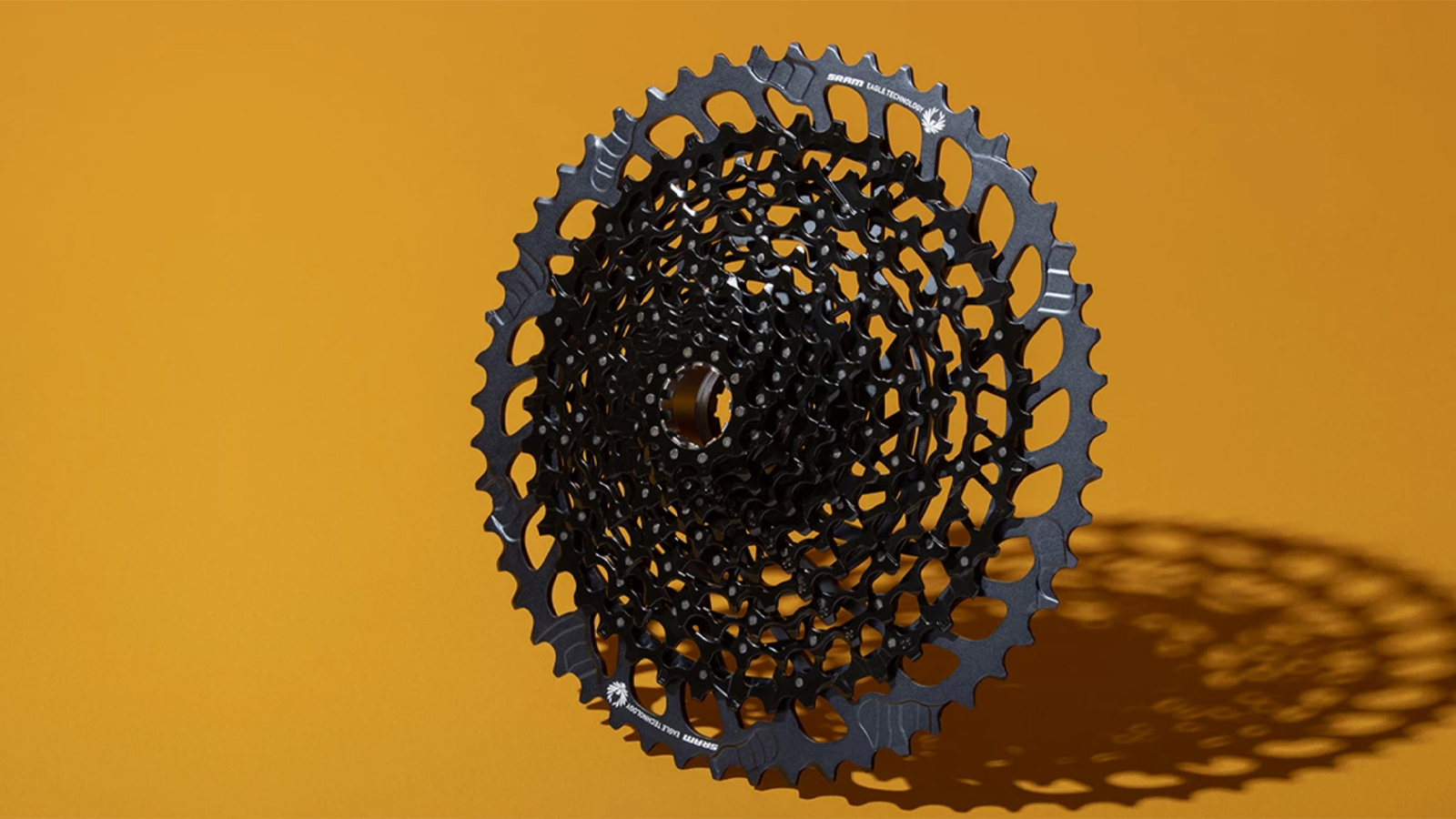
What else is different?
While the core setup of NX and GX is a mechanical 1x12 drivetrain, there are other options such as the 7-speed GX DH for downhill-specific riding and the GX Eagle AXS – which is the least expensive way to get into the AXS Eagle system. The differences between these GX setups and the NX Eagle groupset are somewhat obvious though. The trickier problem is deciding between directly comparable NX Eagle or GX Eagle.
As laid out above, the most obvious difference is the cassette and by extension the derailleur that goes with it. Even that isn't as straightforward as it would seem though. All the Eagle drivetrains are cross-compatible. That means if you wanted to spec the GX Eagle but had wheels that couldn't upgrade to the XD freehub you could do it by just using the NX cassette. Alternatively, if you wanted more range all you need to grab is the GX cassette and derailleur.
There are other reasons you might mix and match, too. If you were only able to get parts from one drivetrain because of shortages or location. Grab whatever you can and it will work. If you already have an Eagle drivetrain you could upgrade to electronic with the GX Eagle AXS upgrade kit to keep things as low cost as possible.
That still leaves the question... what's the real difference? Realistically, it's pretty subtle and it comes down to weight, precision, and price. The weight of GX Eagle groupset is 1,130g total, while the NX Eagle is 1,337g. Along with that weight drop, there are tighter tolerances as you move up the groupset line-up. The difference as you move up more becomes more pronounced, but at this level, it's hard to actually tell the difference.
That leaves price as the last differentiator, SRAM Eagle GX comes in at $587 / £549 / €614 for the full drivetrain system, while SRAM Eagle NX will cost $404 / £384 / €445.
Tech specs: NX Eagle vs GX Eagle
SRAM GX Eagle
- Weight: 1,130g
- Gearing: 1x12 speed
- Maximum cassette size: 10-52-tooth
- Freehub type: SRAM XD
- Price: $587 / £549 / €614
SRAM NX Eagle
- Weight: 1,337g
- Gearing: 1x12 speed
- Maximum cassette size: 11-50-tooth
- Freehub type: HG
- Price: $404 / £384 / €445
Josh Ross was our US tech writer. He's most happy when talking about the finer details of how bicycle parts and components work, and enjoys putting his thoughts to words. He is a road cyclist at heart but can often be found taking the gravel road less traveled. Although he rarely races these days, he still enjoys a good Zwift session and race but will always choose the real world over pixels. Height: 5'9" Weight: 137 lb.
- Rich OwenEditor, BikePerfect

